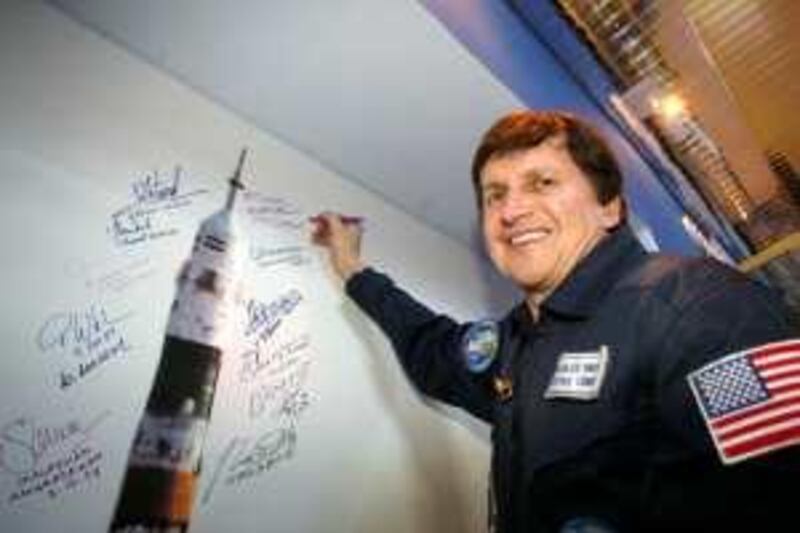The US software pioneer Charles Simonyi should tomorrow become the first person in history to travel into space twice as a tourist, in trips costing a total of US$60 million (Dh220m). Mr Simonyi will blast off for the International Space Station (ISS) at 11.49 GMT from Russia's Baikonus cosmodrome deep in the Kazakh steppe, along with a professional astronaut and cosmonaut. The software programmer, who was one of the pioneers of Microsoft before founding his own firm, has paid $35m for the trip, a significant rise from the $25m he paid for his April 2007 visit.
But making the final preparations for the trip, Mr Simonyi in Baikonur spoke with passion about the moment the spacecraft docks with the ISS and said he expected the latest voyage to be even better than the first visit. "You are basically nowhere, far from everything and you reach this fantastic man-made object. It looks very fragile," he said, referring to the ISS. "I didn't regret, it was fantastic, I hope it will be even better this time. I think it's a continuation of the first trip."
Some things have changed in his life since then. When Mr Simonyi became the fifth person to go to space as a tourist, he was going out with the US lifestyle queen Martha Stewart, who gave him an emotional send-off at the cosmodrome. But Mr Symonyi, 60, has since married the Swedish millionaire's daughter Lisa Persdotter, who it seems is less keen on space travel than he is. "I certainly offered her [a chance to go] but she does not want to go. I think it's still a little bit technical, too difficult. But she is learning to fly a helicopter. So step by step."
He has also said his new wife has banned him from making a third trip to space, a possibility that may not arise in the near future as Russian space officials have said his trip could be the final such voyage. The berth for the space tourists will be needed by cosmonauts and astronauts when the crew of the ISS is doubled to six people in May. Mr Symonyi's trip will be the seventh time a tourist has gone into space.
"I really was nervous the first time and if anything I'm less nervous now because I know exactly what is going to happen, all the steps," he said. Born in Communist-ruled Hungary, Mr Simonyi was already a computer programmer in his teens and at 13 he represented Hungary as a junior cosmonaut, even winning a trip to Moscow to meet one of the first cosmonauts. He started working as the nightwatchman in a technology company but has said his greatest ambition had been "to get out of Hungary and emigrate to the West".
He succeeded in that ambition at the age of 20 when he enrolled in the prestigious University of California-Berkeley and studied engineering and mathematics. His path to fortune was laid in 1981, when he was hired by a little known information technology firm called Microsoft and helped design their benchmark Word and Excel programmes. Mr Simonyi later received US citizenship, and in 2002 quit Microsoft to found his own firm, Intentional Software.
The space tourism initiative, which is run by the private US company Space Adventures, has provided a welcome additional source of income for the Russian space programme after the collapse of the Soviet Union. Mr Simonyi will leave his crew of fellow American Michael Barratt and Russian Gennady Padalka at the ISS and return to Earth on April 6 after a 12-day mission. While in space, he will conduct experiments for the European and Hungarian space agencies to assess the impact of space travel on the human body.
* Agence France-Presse






